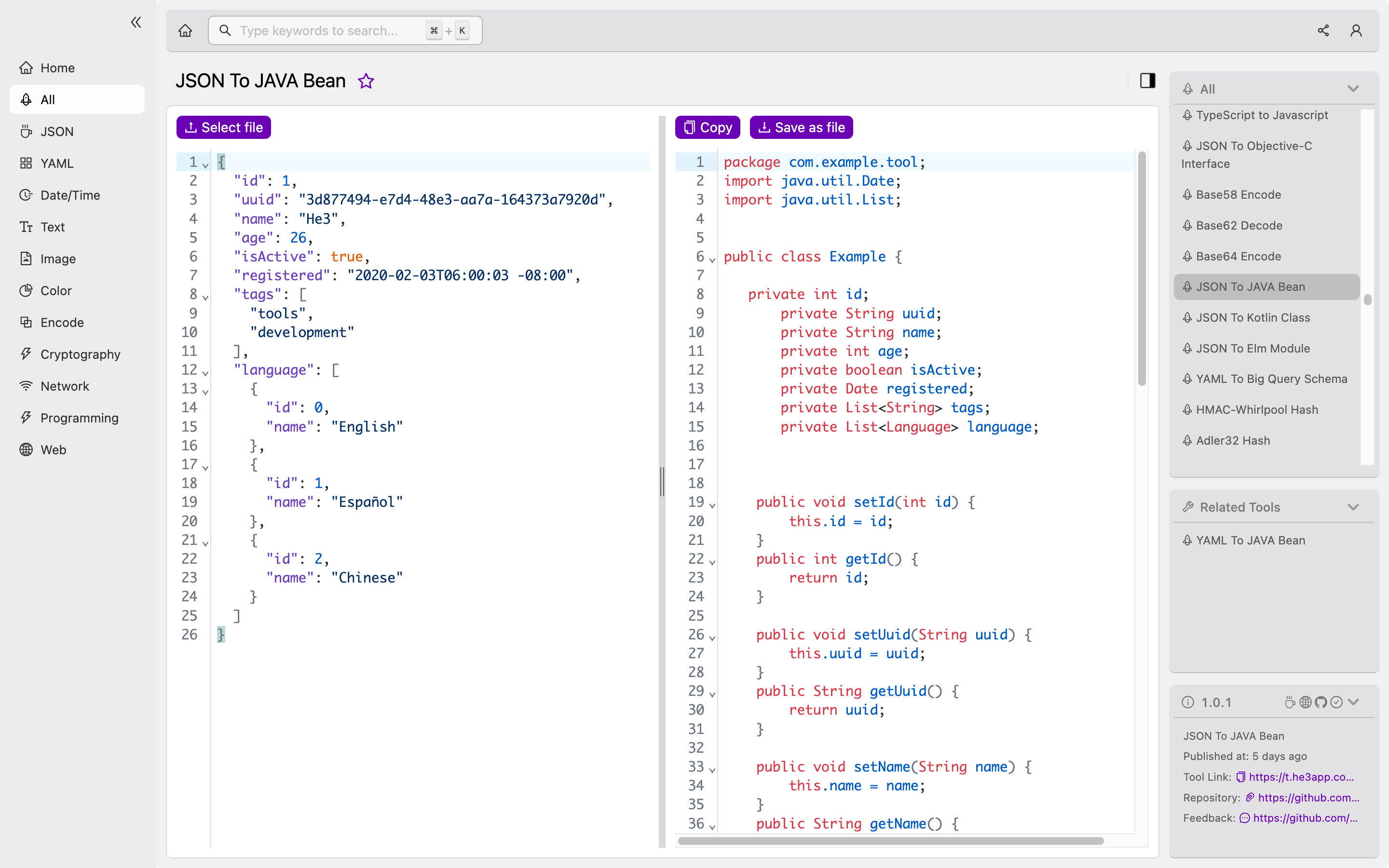JSON To JAVA Bean: Converting JSON to Java Beans Made Easy
JSON (JavaScript Object Notation) and Java are two popular technologies used in web and software development. JSON is a lightweight and easy-to-read format for transmitting data objects, while Java is a programming language used for developing desktop and web applications. One of the challenges in software development is converting JSON data to Java objects or Java Beans. The solution is to use a JSON to JAVA Bean converter, and this article will explain how it works and provide scenarios for developers.
What is JSON to JAVA Bean Conversion?
JSON to JAVA Bean conversion is the process of transforming JSON data into Java objects or Java Beans. Java Beans are plain Java objects that conform to certain naming conventions, and they are often used to encapsulate data and simplify program development. JSON to JAVA Bean conversion enables seamless data exchange between different application tiers, such as between server and client applications.
To convert JSON data to Java Beans, developers can use various methods, such as manual parsing, using open source libraries, or using JSON to JAVA Bean converters. There are many tools available online that can help developers convert JSON to Java Beans easily, such as JSON Tools, GSON, and Jackson.
Or you can use JSON To JAVA Bean tool in He3 Toolbox (https://t.he3app.com?d5ik) easily.

How does the JSON to JAVA Bean Conversion Work?
JSON to JAVA Bean conversion works by mapping JSON data to Java objects or Java Beans. The mapping process involves creating Java classes that mirror the structure of the JSON data, and using Java annotations to specify the mapping rules between the JSON data and the Java classes. The JSON data is then converted to Java objects or Java Beans using the mapping rules specified in the annotations.
Here is an example of how to convert JSON to a Java Bean using the Jackson library:
ObjectMapper mapper = new ObjectMapper();
MyBean bean = mapper.readValue(jsonString, MyBean.class);In this example, ObjectMapper is a class from the Jackson library that is used to convert JSON data to Java objects. MyBean is a Java class that represents the JSON data, and jsonString is a string that contains the JSON data.
Scenarios for Developers
JSON to JAVA Bean conversion is useful in various scenarios, such as:
- When developing web applications that handle JSON data
- When integrating different software systems that use JSON and Java
- When automating data exchange between different application tiers
Key Features
Here are some key features of JSON to JAVA Bean conversion:
| Feature | Description |
|---|---|
| Ease of Use | JSON to JAVA Bean conversion is straightforward and easy to learn |
| Data Integrity | Conversion ensures data consistency between JSON data and Java Beans |
| Performance | JSON to JAVA Bean conversion is fast and efficient |
| Flexibility | Conversion can be customized to fit different mapping requirements |
| Reusability | The converted Java Beans can be reused in different applications |
Misconceptions and FAQs
Misconception 1: JSON to JAVA Bean conversion is only for Java developers.
JSON to JAVA Bean conversion is primarily used in Java development, but it can also be used in other programming languages that support Java Bean-like objects, such as C# and Python.
Misconception 2: JSON to JAVA Bean conversion requires advanced programming skills.
While some JSON to JAVA Bean conversion methods require advanced programming skills, most open-source libraries and online tools provide easy-to-use APIs that simplify the conversion process.
FAQ 1: Is JSON to JAVA Bean conversion the same as JSON parsing?
No, JSON parsing is the process of extracting data from a JSON string and storing it in a data structure, such as an array or a map. JSON to JAVA Bean conversion involves creating Java Beans that represent the data structure of the JSON data.
FAQ 2: Can JSON to JAVA Bean conversion handle complex JSON data structures?
Yes, JSON to JAVA Bean conversion can handle complex JSON data structures, such as nested arrays and objects, using custom mapping rules.
Conclusion
JSON to JAVA Bean conversion is an important process in web and software development that enables seamless data exchange between different application tiers. It simplifies program development and ensures data integrity. Developers can use various methods to convert JSON data to Java Beans, such as manual parsing or using online tools and open-source libraries. With He3 Toolbox’s JSON to JAVA Bean tool, developers can easily convert JSON to Java Beans without typing any code.
References:
